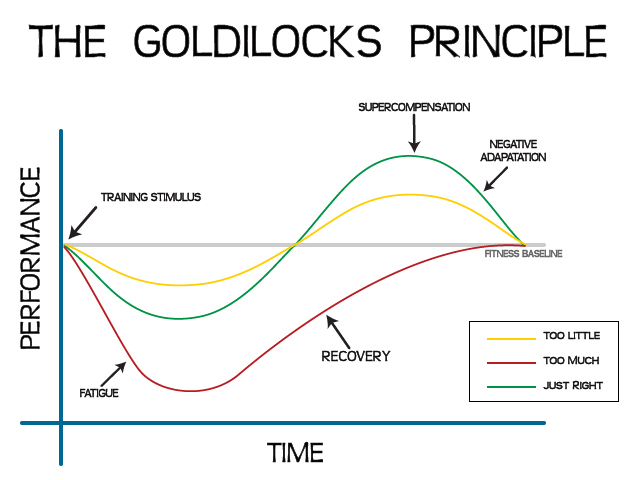Running injuries are the worst. They sap your motivation and force you to sit on the sidelines, watching your hard-earned fitness go down the drain. If you’re anything like me, you’ve had your share of running injuries that put a quick end to your running goals.
This post originally appeared on Strength Running.
In fact, I used to be chronically stuck in a never-ending injury cycle with:
- Achilles Tendinopathy
- Plantar Fasciitis
- Countless arch strains
- IT band syndrome
- SI joint imbalances
But these injuries caused me to take pause and evaluate my routines. Once I learned that injuries can be a blessing in disguise, my running flourished. I learned how to do a lot of things differently. My approach to easy runs changed dramatically, I completely overhauled my structure and patterning of workouts and made strength exercises a top priority.
The worst injury of my life — a six month layoff with IT Band Syndrome after my first marathon — led me to experience the best running of my life. It made me stronger — both in the gym and in my ability to run higher mileage. This led to a new wave of confidence in my abilities.
Soon, I crushed my marathon personal best and ran 2:39:32 at the Philadelphia Marathon. Without that IT band injury, I don’t think I would have improved as much or as quickly.
Making the best of my injury forced me to reevaluate how I trained. And those changes led to Strength Running — many of my guiding principles and overall philosophy are geared toward prevention.
Because if you can stay healthy, you can run more. You can be more consistent with your mileage, workouts and long runs. Soon, you’ll be a lot faster. These principles are the foundation for SR’s free injury prevention lessons.
And today, I’m going to help you learn from your next injury so you’ll come back stronger, smarter and faster.
Injury Identification: What Went Wrong?
The first step is to determine what injury you have and why you got hurt in the first place. Too often I hear from a runner who says “my leg hurts”. That’s unfortunate, but detail is critical if you want to make progress.
The most common injuries have these tell-tale signs:
- IT Band Syndrome almost always gives you pain on the outside, lateral side of your knee. It’s worse on downhills and can hurt when walking down stairs.
- Runner’s Knee (PFPS) can be a dull or sharp pain on or around the kneecap that almost always hurts only while running.
- Achilles Tendinopathy presents with pain on the Achilles tendon, is worse when running faster, and can be painful even at rest.
- Plantar Fasciitis is usually worse in the morning with a sharp pain on the heel that feels better after some activity.
- Shin Splints are a common burning or painful sensation on the inner or outer shin bone. They’re more common for beginners.
Runners should see a physical therapist or other medical professional if they’re in pain but have no idea what injury they’re experiencing. But understanding your body, its signals to you, and becoming proficient at self-care is important. If you ran to the doctor for every niggle, you’d soon be broke.
Now, figuring out why you got injured can be tricky. Review your training log and look for these red flags:
- Did your overall weekly mileage increase significantly in a short period of time?
- Is your weekly mileage inconsistent with peaks and valleys?
- Do you run more than about 20 per cent of your weekly mileage at a hard effort?
- Do you consistently skip strength work?
- Is all of your running in the same shoes, at the same pace, on the same terrain?
There are virtually countless reasons why you could be injured. But these are the most common reasons that I’ve seen after looking at the training of thousands of runners over the years.
Once you have more information, you’re ready to treat your injury, get healthy and prevent it from recurring.
Change Your Training to Prevent More Injuries
At this point, you’ve identified your injury and have at least a general idea of why it occurred. Now you can modify your running to ensure it doesn’t happen again. After all, making the same mistakes and simply hoping to stay healthy isn’t too smart!
Look at the reasons I mentioned above that may have caused your injury. If you suspect one of them caused your injury, do the opposite in your training. For example, if more than 20 per cent of your mileage is at a hard effort, then slow down and run easy for at least 80 per cent of your overall mileage.
Here are a few other examples:
- If you never do strength workouts, start now.
- If your running lacks variety, repetitive stress injuries will be common.
- Run consistent mileage if yours often swings wildly from high to low mileage
You can also look at your injuries from a historical perspective. This is where a training log comes in handy so you remember your previous injuries. Always seem to get foot injuries? It’s time to strengthen your feet. Always get hurt if you run over a certain weekly mileage? Slow down and get stronger before increasing your kilometres.
If you have no idea what your injuries are, why they occur or how to change your training to prevent injuries then it might be prudent to learn more about running. Strength Running’s injury prevention material is a good place to start (and it’s free).
How Do the Best Runners Learn from Injuries?
I always love looking at how the best runners in the world tackle their injuries. Do they know of some strategy that works to prevent injuries that us normal runners don’t? What mindset shifts allow them to come back strong?
I pulled out my copy of Coming Back Strong: Distance Runners on Injury, Cross Training And Rehab to see how the elites deal with getting hurt.
Patrick Smyth (the 2015 world mountain running champion — I interviewed him here) was asked what he learned from being injured:
To do the litle preventive things. I incorporated a proper warm-up, ancillary strength, icing and general recovery routine into every single run/workout and even cross-training days.
Also, to be extremely careful in building up after significant time off as that seems to be when a lot of injuries crop up.
I incorporated a more substantial general and ancillary strength routine into my overall regimen and took the warm up as well as the recovery process more seriously.
Alan Webb is another great example. He’s the American record holder in the mile (3:46.91) but has had a long history of injuries.
Here are his thoughts on injuries:
Take it slow on the way back [from an injury]. There is no need to rush things. It is hard and having a coach that you trust is a big part of this.
Running is a contact sport with every step a force of 3-5 times your body weight. If you can look at running in this way then you and your coach will become more aware of the risks of intense training and therefore plan it in a more precise manner which will lead to fewer injuries and faster running.
I could quote elite runners all day. The consensus seems to be clear: Do the little things, increase mileage and intensity gradually, get stronger and focus on injury prevention.
Without prioritising prevention, you’re destined to suffer far more injuries.
Injuries Are the Ideal Learning Experience
Your body is not a machine. It can get stronger, but only with the right level of stress and recovery. If you’re injured, then something happened that did not respect this stress and recovery process. Like Goldilocks, you should strive to get the balance just right:

If that fatigue dips too low (in other words, the training stimulus was far too stressful), then you’ll probably become injured.
But we learn through trial and error. Sometimes, an injury is just what you need, a reality check that you’re human and you must respect the process of training. So channel your frustration and anger into cross-training to maintain your fitness.
Embrace flexibility and realise that training plans are just examples of ideal training. They’re fluid so remember to listen to your body and reschedule workouts if you’re not ready.
Learn more about injuries (and why they happen) so you’ll stay healthier for longer.
Why? Because staying healthy allows you to do everything: Run faster, train smarter, have more fun and get more enjoyment out of our wonderful sport.
How to Learn from the Silver Lining of Running Injuries [Strength Running]
Photo by David Marcu via Unsplash.

Comments
One response to “How To Learn From Running Injuries And Reevaluate Your Routine”
Mixing up trails with road running did the trick for me.